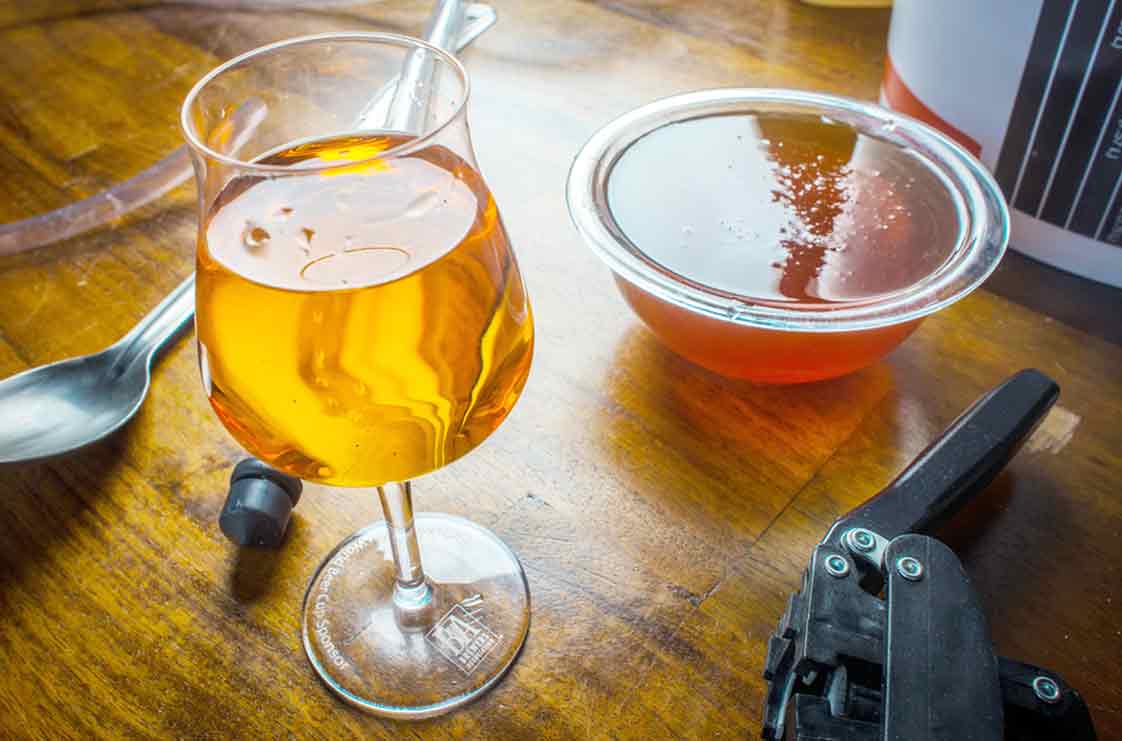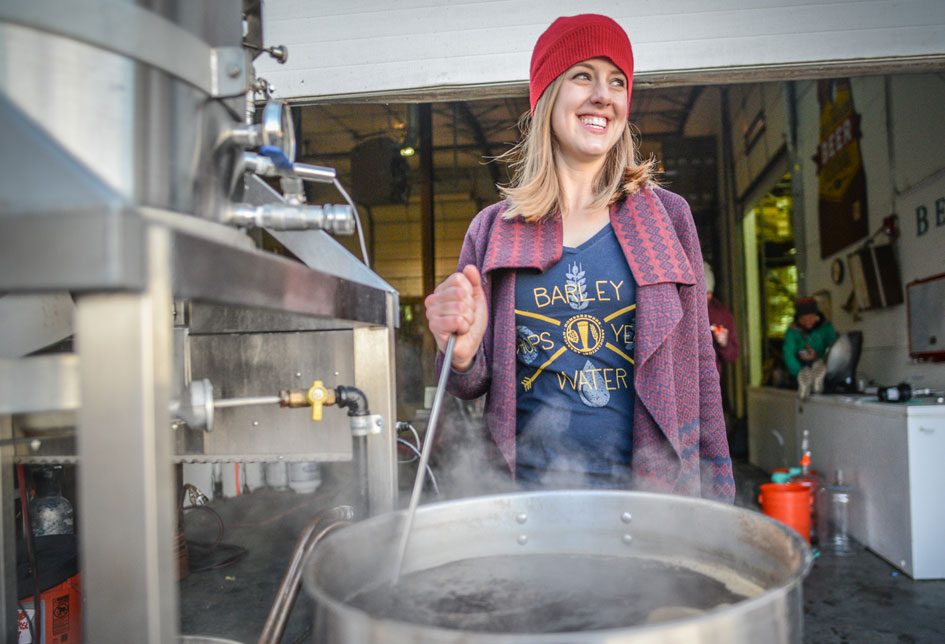
Backsweetening is a process commonly used in mead and cider making to sweeten the finish of a fermented drink just before packaging. This is a useful technique to have in your arsenal of tricks since it is very common for meads and ciders to ferment out bone-dry, especially if they are intended to be lower in alcohol. But the process is not as simple as dumping in sugar to taste.
Yeast’s job is to convert sugar into alcohol and CO2, a sacred process better known as fermentation. Yeast are very efficient and will continue the fermentation process until all fermentable sugars are depleted, the beer passes the yeast’s alcohol tolerance threshold and/or the yeast is halted by the brewer (either intentionally or accidentally). This means, if you were to simply add in sugar to sweeten a mead or cider, it is very likely the yeast will pick up where they left off and ferment those added sugars, reducing the sweeteness and raising the ABV. This is where backsweetening comes in.
Simply put, backsweetening requires two steps: halting fermentation and adding sugar. The following steps from Ken Schramm’s The Compleat Meadmaker can be used to create a sweetened, uncarbonated mead or cider:
How to Backsweeten
- Add 1/2 teaspoon of potassium sorbate per gallon of mead/cider and and stir to halt fermentation. Potassium sorbate does not kill yeast, but prevents them from converting anymore sugars into carbon dioxide and alcohol.
- After at least 24 hours, additional sugar (typically honey) can be added to the mead without the risk of fermentation.
- The desired sweetness will depend on your personal preference. Add the sugar* of your choosing in small increments, thoroughly stirring, and then testing until the desired sweetness is obtained.
*It is common for honey to be used in meads and apple juice concentrates for ciders, but explore the other sugar options available for something different!
Carbonation and Residual Sweetness
Things get a little trickier if you’re wanting a backsweetened and carbonated mead or cider, especially if you bottle.
The simplest method is to use a homebrew kegging system. Keg systems use tanks of CO2 to force carbonated liquid to a desired level, which does not require the yeast’s services in any way. This is good since ‘step 1’ of the backsweetening process above effectively eliminates the fermentation capabilities of the yeast.
Bottle-conditioning a backsweetened and carbonated mead or cider, on the other hand, is a tricky puzzle to solve. Bottle-conditioning is the process of allowing yeast in a sealed bottle to ferment a small amount of sugar in order to produce CO2 that will dissolve into solution and create carbonation. This means the yeast cannot be halted (as in ‘step 1’ of the process above), and in most instances the sugars added intended to sweeten the mead or cider will be fermented out completely by the yeast. If this occurs in a sealed bottle, the pressure from fermenting all the added sugar can lead to over-carbonation and bottle bombs.
There is the possibility of heat-pasteurizing sweetened, bottle-conditioned mead and ciders, but the process takes some experimentation to master. It involves fermenting some of mead or cider in a plastic bottle so you can squeeze the bottle and gauge the progression of the carbonation. Once it’s at the target level, heating the bottles in a hot water bath stops the yeast from fermentation. Results may vary at first, but you’ll get the hang of it after a few attempts.
The safest and easiest method for bottling carbonated and sweetened meads and cider is to buy or build a counter-pressure filler to fill bottles with force-carbonated mead or cider from a keg. Since the carbonation is being forcefully added from a CO2 tank, the yeast do not need to be active. It’s the best of both worlds.





Share Post